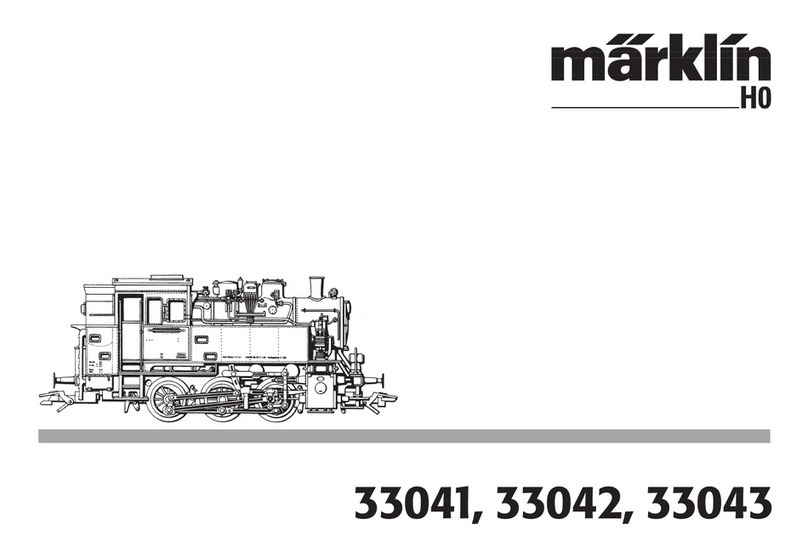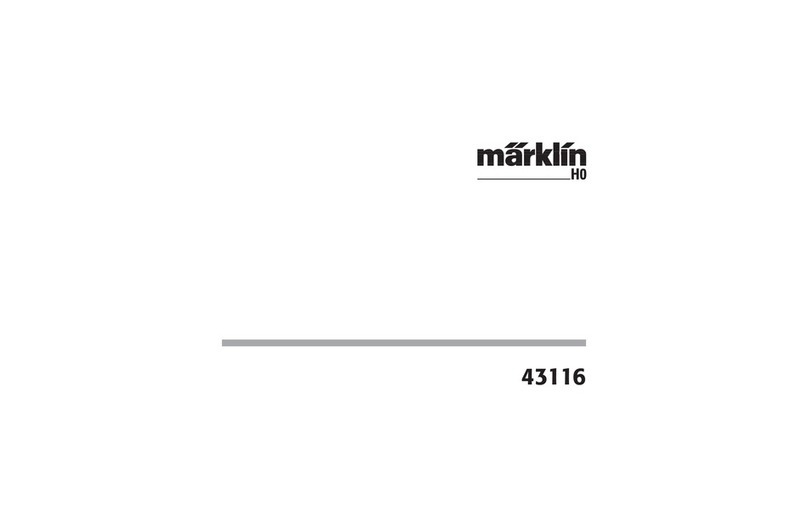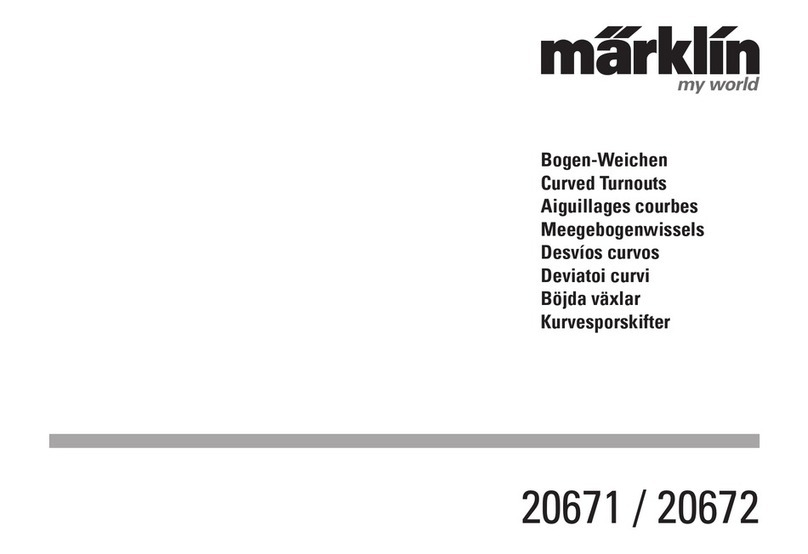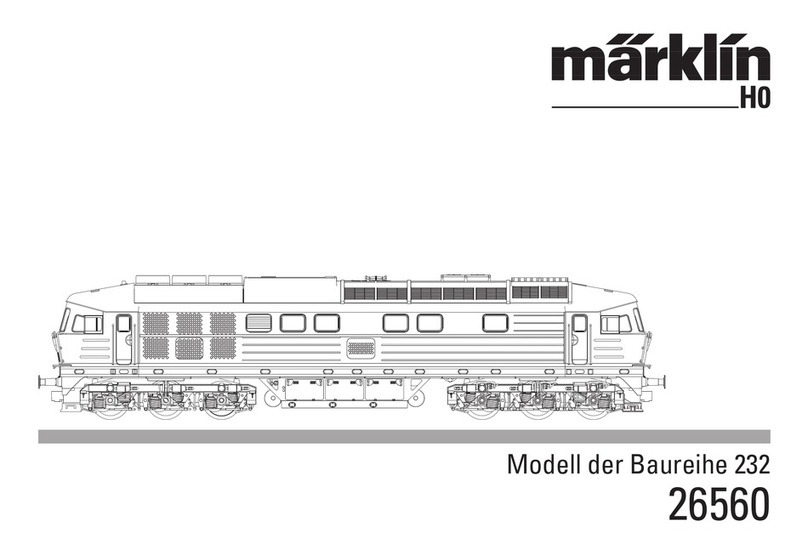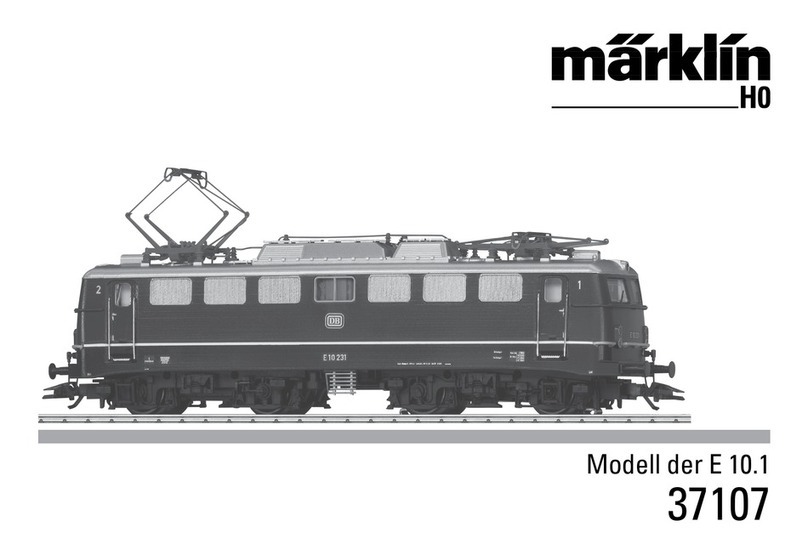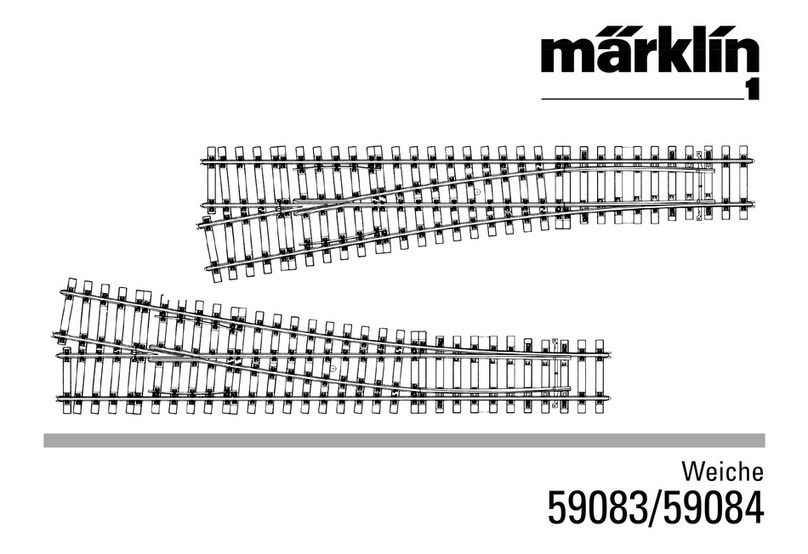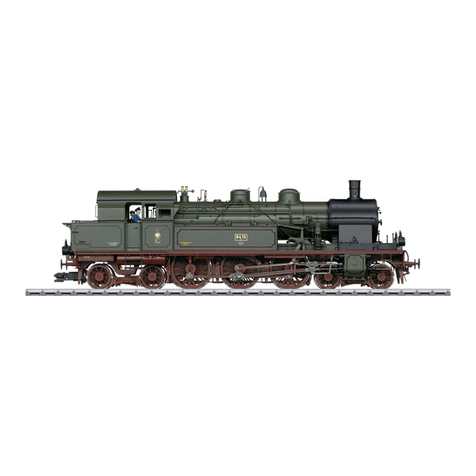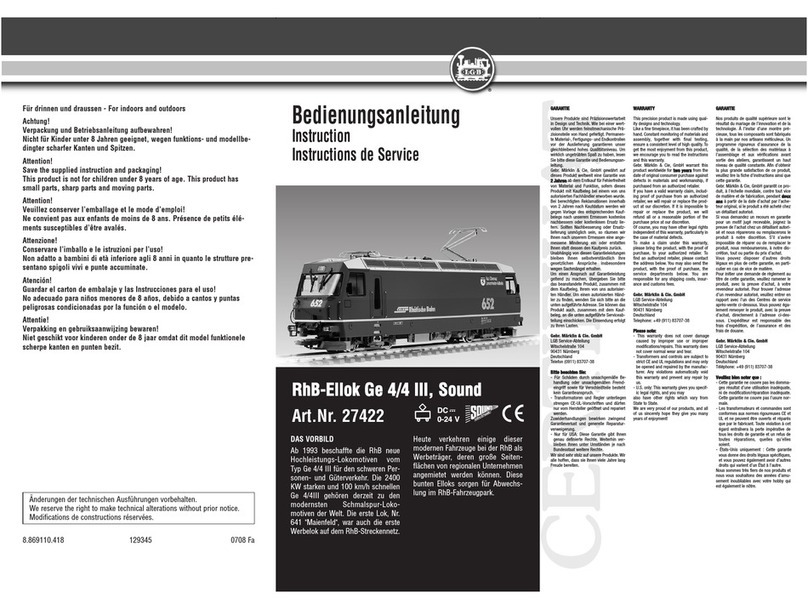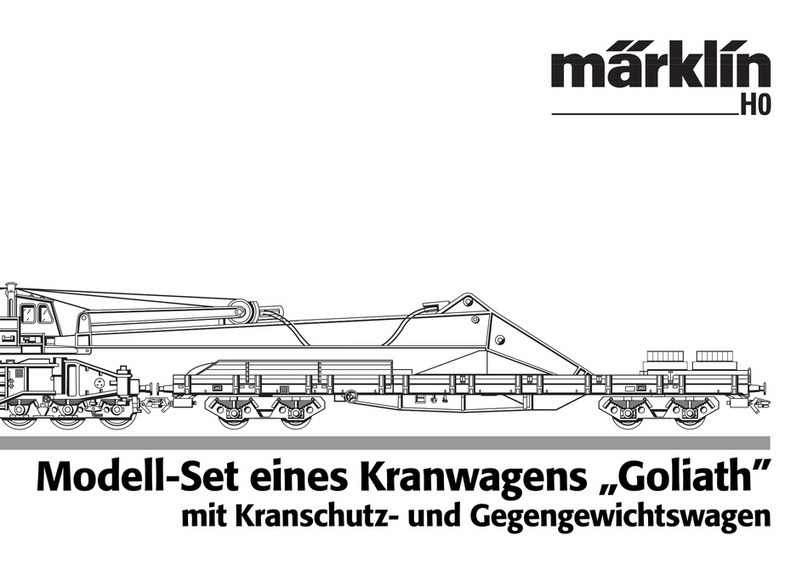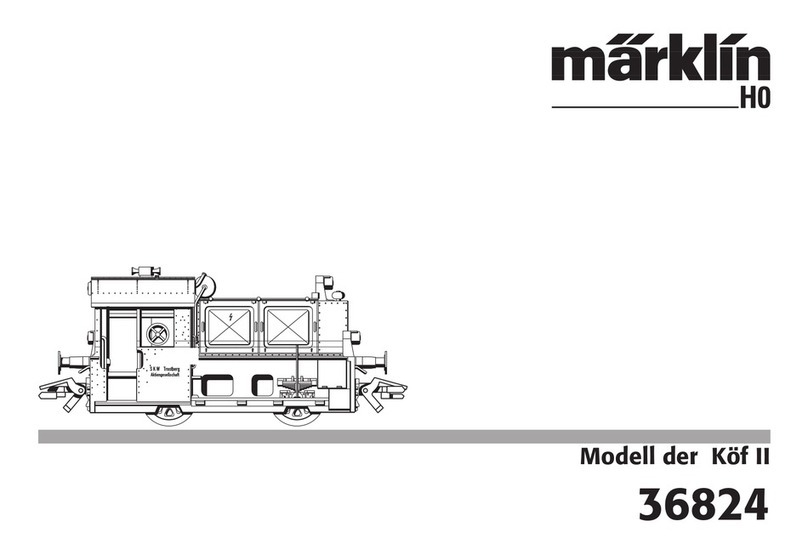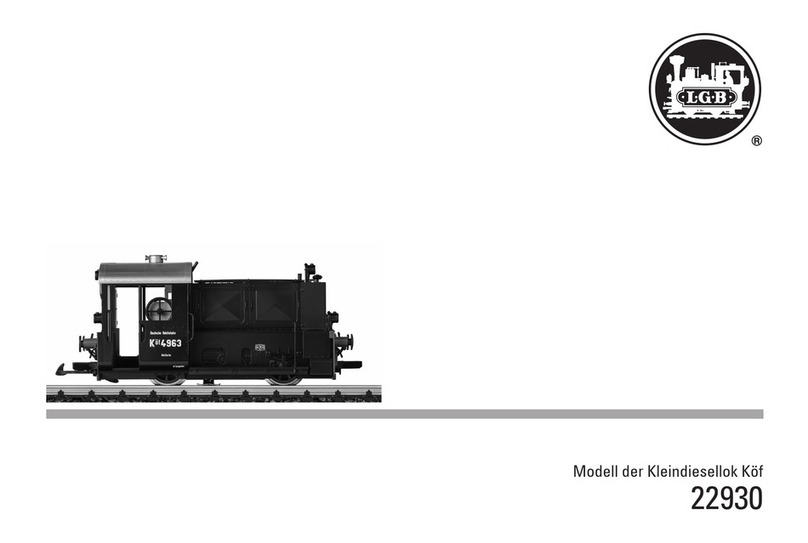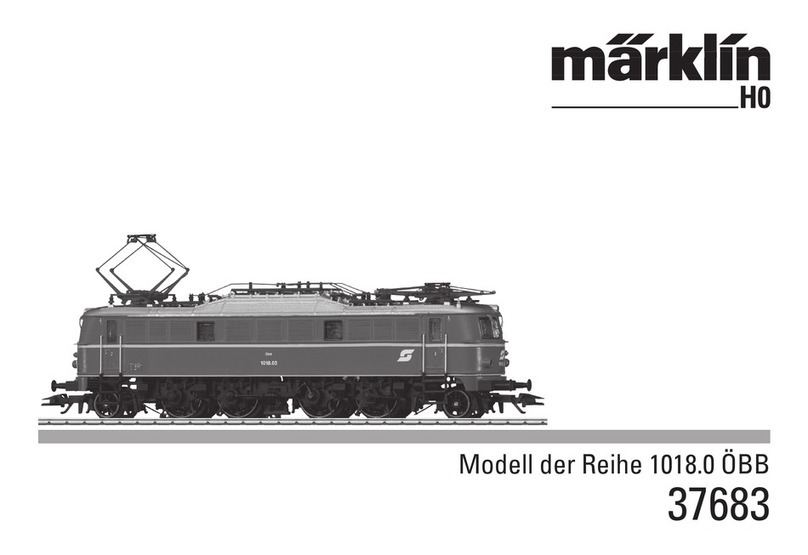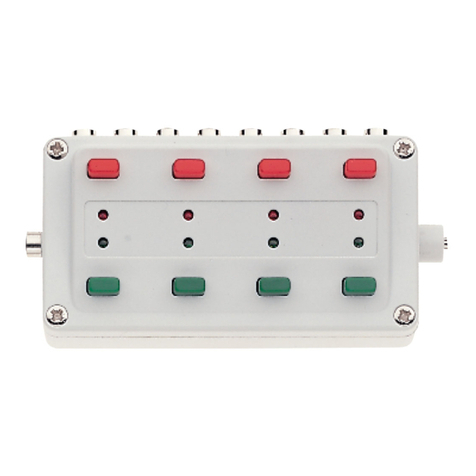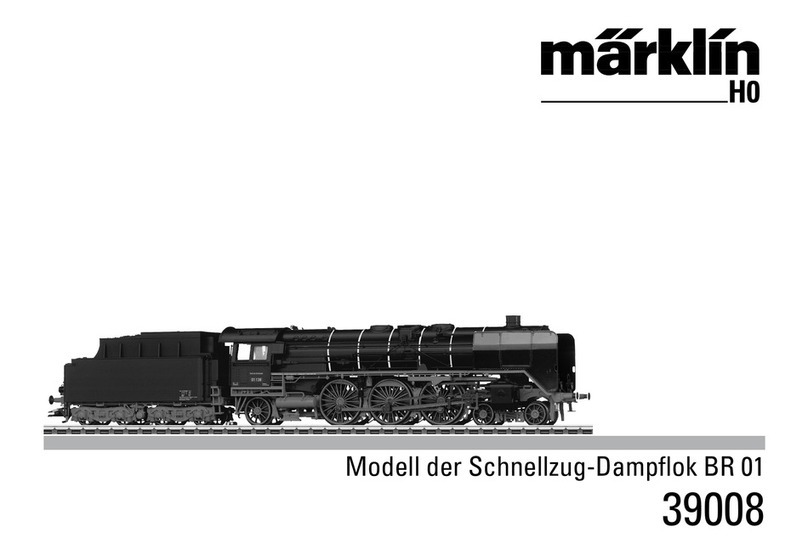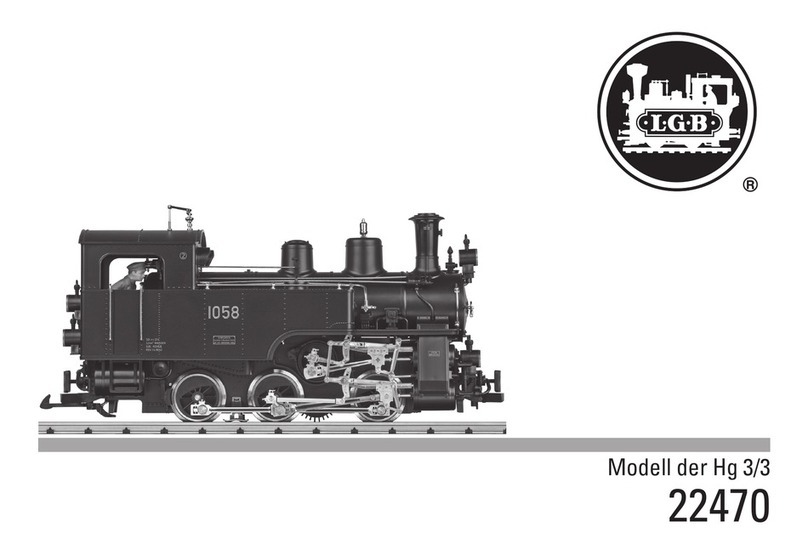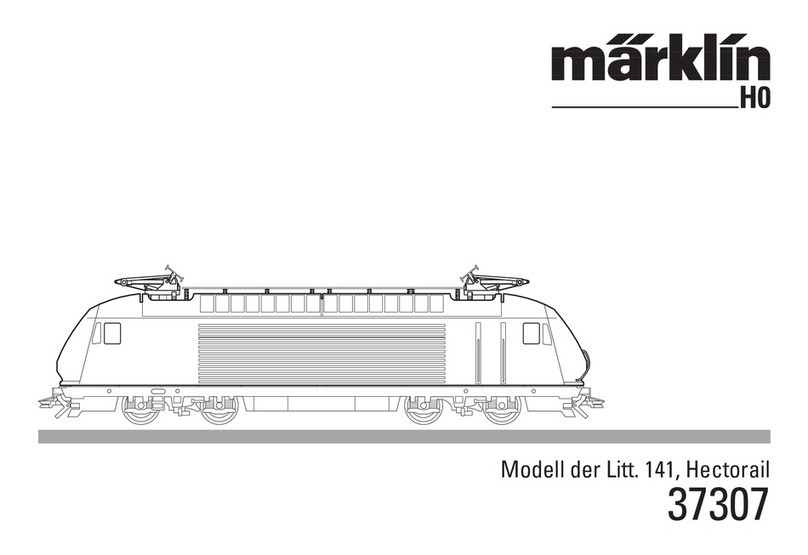2
Informationen zum Vorbild
Die 1900 zum ersten Mal in Dienst gestellte preußische Tenderloko-
motive der Baureihe T 93 bewies sehr schnell ihre guten Eigenschaf-
ten. Daher ist es nicht verwunderlich, dass dieser Loktyp – teilweise
in Lizenz – auch bei anderen Eisenbahnverwaltungen zu finden
war. Ein Beispiel hierfür sind die 10 für die K.W.St.E. hergestellten
Exemplare.
Die Lok war dank ihrer Höchstgeschwindigkeit von 65 km/h nicht nur
im Güterzug- sondern auch im Personenzugverkehr auf Nebenbahn-
strecken anzutreffen. Bei der DRG wurde die Lok unter der Bezeich-
nung BR 913-18 eingereiht. Nach dem 2. Weltkrieg reduzierte sich die
Anzahl der Fahrzeuge bei der Deutschen Bundesbahn rasch. 1964
wurde die letzte BR 91 ausgemustert. Zu spät stellten viele Eisen-
bahnfreunde fest, dass eine der häufigsten gebauten Lokvarianten
fast unbemerkt stetig aus dem Dienst geschieden war.
Information about the prototype
The Prussian class T 93 tank locomotive was first placed into
service in 1900 and quickly demonstrated its good qualities. For
that reason it is not surprising that this type of locomotive was
also used by other railroads – in part under license. An example of
this is the group of 10 units built for the Royal Württemberg State
Railways (K.W.St.E.).
Thanks to its maximum speed of 65 km/h (approximately 41
mph), this locomotive could be seen in use with passenger
trains on branch lines as well as with freight trains. On the DRG
the locomotive was redesignated as the class 913-18. After
World War II the number of locomotives on the German Federal
Railroad was quickly reduced. In 1964 the last class 91 was retired.
Many railroad fans realised to late that a locomotive type built in the
largest quantities was continually withdrawn from service unnoticed.
Informations concernant la locomotive réele
La locomotive-tender prussienne de la série T 93, mise en service
pour la première fois en 1900, démontra très rapidement ses capa-
cités. Il n’est donc pas étonnant de retrouver ce type de machine
– en partie sous licence – dans d’autres administrations ferrovi-
aires. Un exemple réside dans les 10 exemplaires construits pour
les Chemins de Fer Royaux Wurtembergeois.
Grâce à sa capacité d’atteindre une grande vitesse de 65 km/h, la
locomotive se rencontrait non seulement en tête de trains de mar-
chandises, mais aussi au crochet de trains de voyageurs sur les
lignes régionales. A la DRG, la locomotive était répertoriée dans la
série (BR) 913-18. Après la Seconde Guerre Mondiale, le nombre de
machines décrut rapidement à la Deutsche Bundesbahn. La der-
nière BR 91 fut radiée en 1964. Beaucoup d’amateurs ferroviaires
constatèrent trop tard qu’une des séries les plus fabriquées avait
été peu à peu écartée du service sans que celà ne ce remarque.
Informatie van het voorbeeld
De Pruisische tenderlocomotief, serie T 93 werd in 1900 voor het
eerst in dienst gesteld en bewees al snel zijn goede eigenschappen.
Daarom is het niet zo verwonderlijk dat dit locomotief type, voor een
deel in licentie, ook bij andere spoorwegmaatschappijen te vinden
was. Een voorbeeld hiervan zijn de 10 exemplaren die voor de
K.W.St.E. gemaakt werden.
De loc was dankzij zijn maximum snelheid van 65 km/h niet alleen
voor goederentreinen, maar ook voor personentreinen op neven
banen te vinden. Bij de DRG werd de loc onder het type BR 913-18
opgenomen. Na de tweede wereldoorlog reduceerde het aantal
locs bij de Deutsche Bundesbahn snel. In 1964 werd de laatste BR
91 buiten bedrijf gesteld. Te laat stelden vele spoorwegliefhebbers
vast, dat één van de meest gebouwde locomotieven gestadig maar
onopgemerkt buiten dienst gesteld was.
